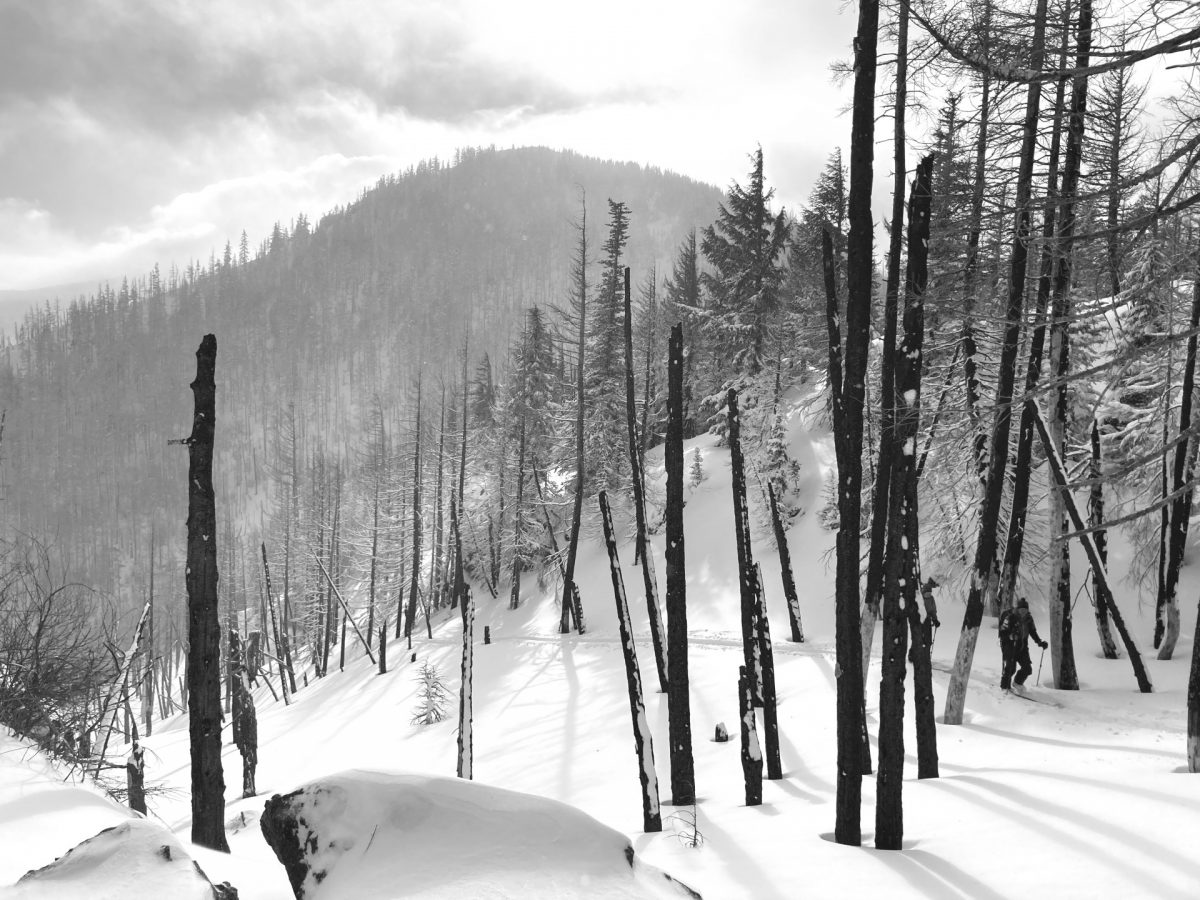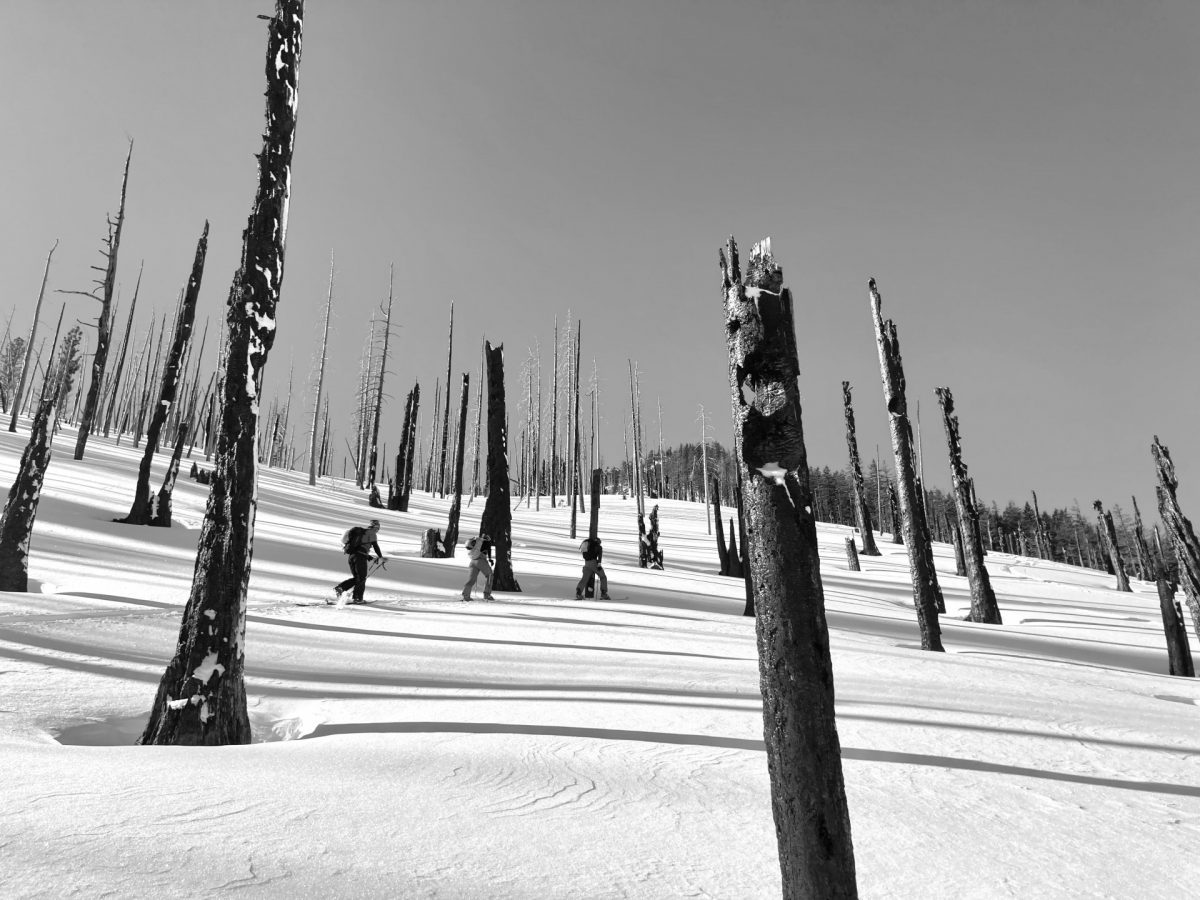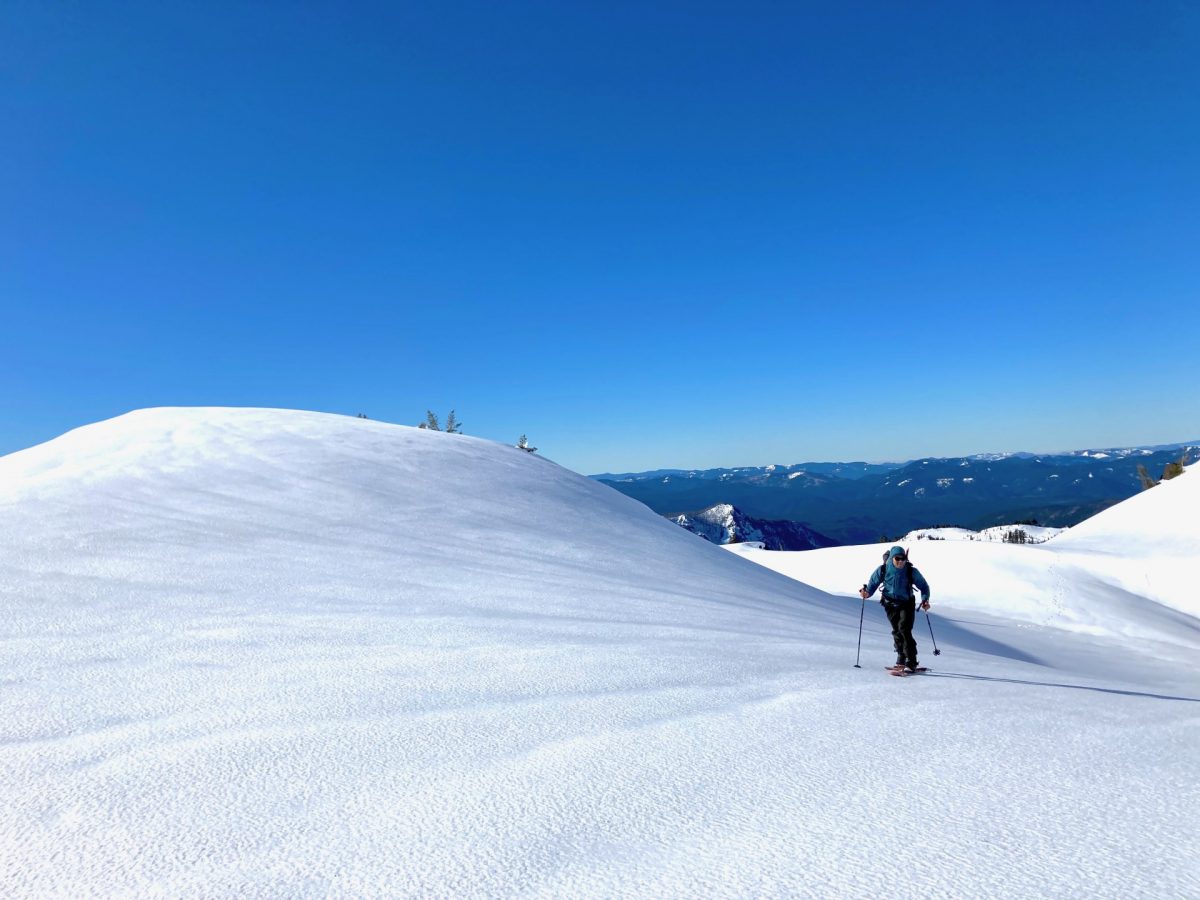
Skinning up through a wildfire-burned-zone. Just to the right of the skiers, on a north facing slope, the unburned trees offer less kind skinning and dense tree skiing.
Scientists examine max SWE and melt out dates in burned and un-burned zones and paint a picture of snowmelt many backcountry skiers and riders know; winter wanes earlier. The upside: often, wildfires open up terrain making for easier skinning and wide open turns.
Some things we know we know and are ground-truthed by backcountry skiers and riders. We don’t necessarily, need others to confirm what we’ve observed. The first is this: that often burned forests provide ample zones for sweet skiing and open access for skinning for what may have been, pre-burn, an Alaskan-style bushwhack. The other, more depressing thing we know, these zones, post-fire, often melt out faster than they have historically. I’m not collecting data; these are anecdotal observations. But burned forests are likely exposed to more direct sunlight come spring, and dust can settle on this open snow more readily. More dust probably means a lower albedo, causing already more exposed snow to melt out that much faster.
I’m glad trained scientists are in the field hypothesizing, collecting data, and writing conclusions. A group published “Wildfire Impacts on Snowpack Phenology in a Changing Climate Within the Western U.S.,” this past July, confirming what many of us have witnessed. The post-fire terrain snow sliders love for plastering wide-open big-arcing turns also has a downside. Post-burn sites generally experience smaller snowpacks measured by maximum SWE (snow water equivalent) relative to nearby undisturbed sites, and that snow melts out faster (measured by melt-out dates).
With the opening up of ski/ride terrain post-fire, we get order and disorder, harmony, and disharmony. Those with many trips around the sun know this simply as life. But in this warming life (call it climate change), smaller snowpacks and earlier melt-out dates can exacerbate the ongoing drought here in the West: much of the West relies on a reliable and slowly melting snowpack for myriad uses.
Here’s what the authors conclude:
“Water managers should anticipate changes to snow accumulation and ablation following a wildfire. They can expect earlier initiation of snowmelt and a longer snow-free season, which may impact summer streamflow and water temperatures. In addition, an overall shift of the spring snowmelt hydrograph may occur in watersheds where large fires have occurred. The pre-fire flow regime is likely to take more than a decade to return to pre-fire conditions (if it does return to pre-fire conditions). Therefore, long-term adjustments to reservoir operating criteria or other management activities may be necessary to account for the changes caused by wildfire.”

Skinning up through a burn in the Oregon Cascades.
The Snow Tells
One local SNOTEL site used in the research is a nearby go-to ski zone for many locals. It’s also about five to ten miles — as the crow flies — to another favorite zone. This place, once known for its below treeline mega-bushwacking — burned hot back in 2012. Since the burn, few saplings have germinated, and on windy days the air whipping through the silver-black and burned snags sounds like ghoulish ghosts. Post-fire, the skiing here and access at lower elevations are better, as are the now full-sky views.
The data, though, is downright ghoulish too. An associated unburned control site melts out 12 days sooner, while the burned SNOTEL site melts out 25 days earlier post-burn. That’s nearly a month of skiing. Here’s another kick to the stomach: the date for max SWE was six days earlier in the unburned control site and 20 days earlier at the burned SNOTEL site.
Like many backcountry skiers and riders reacting to a changing environment where fire and smoke season reigns, I’m on Google Earth in all its hi-res glory, spotting where local fires have burned and analyzing elevation, aspect, and turn potential for the upcoming winter. I also know I’ll need to get after it sooner. The yin and the yang.
Postscript: A quick shout out to those fighting wildfires; the AQI’s have been high recently.

Wildland smoke jumper and world class human, Joe Madden, taking a well deserved winter break skinning up a lava flow in the Cascades.
Jason Albert comes to WildSnow from Bend, Oregon. After growing up on the East Coast, he migrated from Montana to Colorado and settled in Oregon. Simple pleasures are quiet and long days touring. His gray hair might stem from his first Grand Traverse in 2000 when rented leather boots and 210cm skis were not the speed weapons he had hoped for. Jason survived the transition from free-heel kool-aid drinker to faster and lighter (think AT), and safer, are better.
